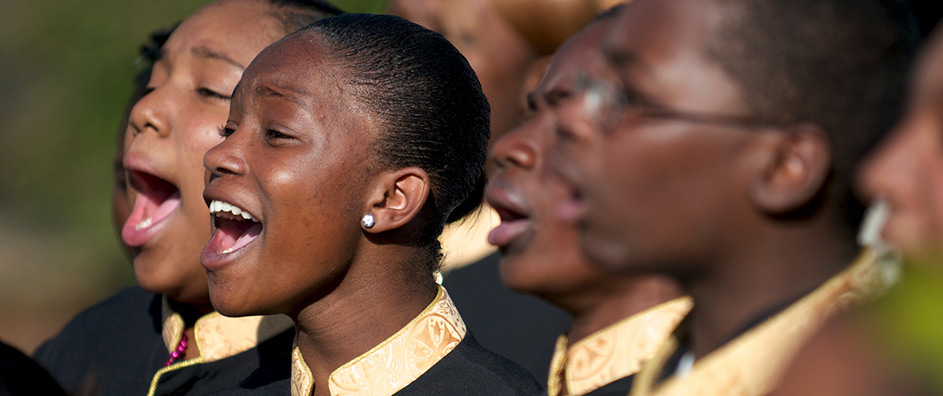Music, an ethereal expression of human emotion and creativity, has been a vital part of civilizations throughout history. Yet, when we delve into the Bahá’í teachings, we encounter an intriguing dichotomy: the classification of music into two broad categories—secular and sacred. This differentiation opens up a Pandora’s box of contemplation: Can music that entertains concurrently elevate the spirit? Or is there an inherent conflict between these two domains? In wrestling with these questions, we uncover a deeper understanding of the harmonies that resonate within the Bahá’í faith.
In the Bahá’í worldview, music serves not merely as a pastime but as a potent vehicle for the expression of profound spiritual truths. This viewpoint posits that music inherently possesses the potential to uplift the soul and incite spiritual reflection, regardless of its classification as sacred or secular. However, much depends on the intent behind the creation and the consumption of the music itself.
Understanding Secular Music
Secular music, often characterized by its focus on personal or social narratives, is understandable through a variety of lenses. It encompasses genres ranging from folk and pop to jazz and classical. The Bahá’í perspective does not dismiss the validity or aesthetic value of these forms. Rather, it positions secular music as a means of engaging with the human experience. It offers a canvas upon which the artist paints their emotions, chronicles their stories, and invites audiences to partake in the universal journey of existence.
Yet, therein lies the challenge. Secular music can also evoke base emotions or perpetuate divisive themes, potentially detracting from spiritual growth. When music misses the mark—focusing excessively on material pursuits, tempestuous relationships, or societal discord—it may serve to anchor the listener in a state of spiritual inertia rather than elevating them. This poses the question: How do Bahá’ís navigate the fluctuating waters of secular music without losing their spiritual bearings?
Exploring Sacred Music
Contrasting with the secular realm, sacred music is imbued with the intention of fostering spiritual edification. This category encompasses hymns, chants, and other musical expressions that explicitly aim to connect the listener with the divine. Within the Bahá’í faith, sacred music serves a paramount function—it is pivotal in prayers and gatherings, producing a profound sense of community and belonging.
The power of sacred music lies in its capacity to evoke thoughts of ultimate realities, transcending mundane existence. By its very nature, it prompts listeners to reflect upon their connection with the divine, inviting transformative experiences that lead to spiritual awakening. However, the challenge exists in ensuring that sacred music remains vibrant and relevant to contemporary audiences. How can sacred music evolve to resonate with new generations while preserving its inherent essence?
The Interplay Between Secular and Sacred
The delineation between secular and sacred music, while useful, is not as rigid as it may initially appear. The interplay between these two realms often leads to fascinating intersections where secular compositions carry sacred undertones. Artists throughout history have adeptly woven spiritual themes into their work, challenging the notion that one’s creative expression is confined to a singular category. The result is a rich tapestry of music that can fulfill both secular and sacred purposes.
This confluence arouses intriguing questions about authenticity and intention. If a secular artist creates a song that inspires spiritual contemplation, does it transcend its original classification? Conversely, does the commercialization of sacred music dilute its spiritual potency? These inquiries highlight the ongoing dialogue among Bahá’ís regarding the transformative power of music in a rapidly changing world.
The Impact of Music on the Individual and Society
Irrespective of classification, both secular and sacred music undoubtedly wield significant influence over the individual and societal consciousness. Music can foster unity, articulate collective aspirations, or serve as a catalyst for social change. In a Bahá’í context, this potential becomes even more pronounced as it aligns with the teachings that advocate for global harmony and the elevation of humanity.
The Bahá’í writings emphasize that music can act as a balm for the soul and a catalyst for bringing people together, fostering conviviality and understanding in an often fragmented world. Envision gatherings where voices intertwine in harmony, uplifting hearts and nurturing the collective spirit of humanity. It is within this communal experience that the lines between secular and sacred blur, illustrating the profound capacity of music to transcend labels and serve a higher purpose.
Conclusion: Embracing the Duality
In conclusion, the Bahá’í teachings on music present an invitation to engage with its dualities—secular and sacred—mindfully. Acknowledging the benefits and challenges of both categories allows for a richer appreciation of music’s role in personal and communal development. As listeners, creators, and participants in the musical journey, Bahá’ís are encouraged to discern the intention behind their musical selections. The ultimate aspiration is to foster a listening experience that aligns with spiritual growth, encouraging a world where music interlaces the fabric of life, promoting unity, love, and understanding.
